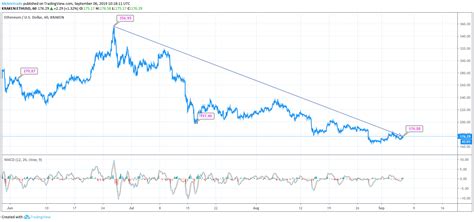The Fixity of Ethereum’s Value: A Review of Current and Future Developments
As the world’s largest cryptocurrency by market capitalization, Ethereum has long been synonymous with innovation and progress. At its core, Ethereum relies on a proof-of-work consensus mechanism, which requires miners to solve complex mathematical problems to validate transactions and create new blocks. A key aspect of this system is the concept of a “satoshi,” which serves as a fundamental unit of measurement for the cryptocurrency’s value.
In this article, we will delve into the current understanding of Ethereum’s satoshis and explore whether their value remains fixed or dynamic in the future.
Current Knowledge
As stated on the BitCoin Wiki (Transactions), 1 Bitcoin is equal to 100 million satoshis. This provides a clear indication that each satoshi is equivalent to one unit of its monetary value.
However, as seen on the BitCoin Wiki (FAQ), “satoshi” specifically refers to the smallest denomination currently possible in the Ethereum ecosystem. In other words, these are the minimum amounts of cryptocurrency that can be transferred between users using the Ethereum network, without incurring any additional fees or transactions.
This distinction is crucial because it implies that while 1 Bitcoin has significant value and represents a substantial block reward for miners (currently set at 6000 new Bitcoins per block), the concept of satoshis themselves has become more nuanced.
Future Developments
In the future, as Ethereum continues to evolve and improve its scalability, security, and ease of use, there may be changes made to how satoshis are valued. Here are some potential scenarios:
- Increasing satoshi supply: If Ethereum introduces new block rewards or increases the number of new blocks per week (currently set at 14), this could potentially lead to an increase in the satoshi supply, making each unit more valuable.
- Ethereum gas fees: As Ethereum’s scalability and congestion levels continue to increase, gas fees may become increasingly expensive. If miners are incentivized to optimize their operations or migrate to alternative protocols with lower gas fees, the value of satoshis could decrease as a result.
On the other hand, there is also the possibility that Ethereum’s valuation could remain relatively static:
- Limited adoption: Until more widespread adoption and use of Ethereum products (e.g. decentralized finance, non-fungible tokens) drive increased demand for cryptocurrencies, the value of satoshis might not change significantly.
- Concerns about centralization: Some investors are concerned about the potential for centralization in the Ethereum ecosystem, where a single entity or group controls a significant portion of the network’s capital. This could lead to a reduction in incentives for miners to participate in the network and increase the value of each satoshi.
Conclusion

In conclusion, while it is currently difficult to predict with certainty whether the value of Ethereum will remain fixed or dynamic, we can make some educated guesses based on current events. The distinction between 1 Bitcoin and satoshis as a unit of currency has important implications for the future of cryptocurrency adoption and use.
As Ethereum continues to evolve and improve its infrastructure, it is essential that investors, developers, and users stay informed about potential changes that could impact the value of each satoshi.
